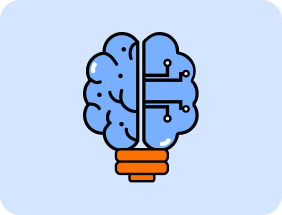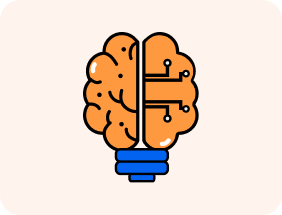Individual Interactive Activities to Boost Classroom Engagement
Getting students interested in the subject can be an act of complex situation. Some adapt into class discussions easily, while others just observe in a crisp silence, processing their thoughts at their own individual pace. Teachers these days are faced with the challenge of somehow balancing both aspects: involving every student while not making them uncomfortable.
Interactive classroom activities serve this purpose. Not only do they spice up lessons, but they also inject meaning and recollection into them. Individual classroom activities give students the understanding to take ownership of their learning, encourage critical thinking, and appreciate the process.
In this blog, we are going to see a variety of teachers' ideas and interactive learning activities that would help to create an interactive, personalized, and effective learning environment, both in a traditional and digital classroom. Let’s look at them one by one.
What are Activities to Engage Students Individually?
Here are some individual classroom engagement strategies that engage students:
1. Creative Writing Prompts and Reflection Exercises
Through writing activities, students get a chance to associate the topics with their lives. Rather than the traditional question-answer sessions, teachers can ask broad questions.
These activities to engage students individually contribute to the development of creativity and self-expression, and at the same time, strengthen the students’ writing and communication skills. Reflection journals can also be utilized at the end of each lesson to enable the students to summarize their learning, pinpoint difficulties, and make an improvement plan. It improves student engagement.
2. Activities Associated with Critical Thinking
Critical thinking activities promote problem-solving skills. Teachers could give relevant scenarios that require learners to determine the best possible solution; for example, designing a plan to reuse waste at school, developing a mock budget to hold an event for their classroom, and so on.
By going through these critical thinking activities, learners will begin to evaluate and analyze problems relationally instead of trying to memorize answers. Teachers could even later encourage discussion after each activity, where learners can discuss and learn from each other’s thinking processes.
3. Active Recall Flashcards
Active recall flashcards are highly beneficial for retention. In this method, students essentially test themselves on key concepts through flashcards. For example, a science class may have one side simply labeled "Photosynthesis," and the other side explains the process.
Teachers can personalize it to make it a more active game by "quizzing" students as individuals or in pairs. Over time, active recall flashcards help develop memory, leading to good study habits, especially before exams.
4. Hands-On Learning Activities
Students recall more when they are physically involved in lessons. For example, a geography lesson could include students making 3D models of terrains. Or, in a physics course, students could build simple circuits.
Hands-on activities examples provide learners with opportunities to link theory with practice, and they can support students who learn best by participating in movement.
5. Scenario-Based Learning
In a safe environment, students can experiment with scenario-based learning, letting them deal with real-life challenges. Teachers can create situations, for example, “You have to manage a community garden with very few resources,” and pupils can then be invited to give step-by-step solutions.
This method helps build a good understanding of the topic, develop patience, and strengthen analytical skills. Besides, this approach makes the class more engaging.
6. Presentation Activities
Students taking turns to present small topics by themselves means that they are responsible for their own learning. Among the tasks that can be assigned for presentations are the following: explaining a science concept, summarizing a book chapter, or telling a personal story that is related to the lesson.
All these activities that involve students giving presentations improve their ability to communicate, be creative, and be confident. They also help the students to organize their thoughts, do the research efficiently, and be clear in their conveying of messages.
7. Research and Inquiry Projects
Research activities allow learners to go far beyond the limits of the textbook. They definitely see more than books can show. Teachers in this way stimulate curiosity-led learning by inviting students to select a topic of their own choice. The students could collect data, interpret it, and then publish their conclusions either in written form or through slide presentations.
These teaching activities are the basis of developing research skills, exercising one's critical thinking, and improving one's creativity.
8. Online and Interactive Tools
The digital classroom can use different ways of engaging students, such as using platforms that offer online activities for students. Tools like virtual whiteboards, gamified quizzes, and discussion boards provide a more collegial atmosphere for remote or hybrid learning.
For example, teachers can instantly provide feedback using quiz apps, conduct virtual simulations for experiments, or use narrative tools for creative writing. The use of technology makes it easier and more enjoyable for learners in any place.
9. Practical Problem-Solving Games
Word puzzles, math races, or problem-solving scenarios are simple but effective games that excite students about learning, and if applied properly, these learning activities will also teach concentration, cooperation, and flexibility.
For example, the science teacher might set a “mystery box” challenge where students guess the outcomes based on clues or data. Such curiosity moments ensure that students remain active participants in the learning process and that the learning is lively.
10. Active Reflection and Peer Feedback
The process of reflection, which comes after each non-solo teaching session, allows students to relate the activities to the learning goals. The teacher might question, “What was the most unexpected thing you learned today?” or “Where else do you see this being applicable?”
If done together with peer feedback, it promotes communication and respect. Through this process, students learn to see the difference between their peers’ opinions and their own and to regard errors as their friends in learning. By this, the engagement cycle is finished as the learners are helped to think, act, and reflect.
YMetaconnect’s Methodology for Effective Learning
YMetaconnect is a platform for learning and community that is driven by AI and helps learners by developing their self-learning and modern skill-building. Its methodology integrates both individual and group activities to keep learning active, reflective, and practical.
Learning Methodology:
The R–A–R (Review–Action–Reflection) cycle is the basis for deeper understanding.
It balances personal learning with collaborative growth.
Individual Activities:
They encompass self-paced reflections, learning journals, and goal trackers.
They not only build focus, confidence, and independent thinking but also strengthen critical thinking and progress tracking.
Group Activities:
They include discussions, projects, and collaborative problem-solving.
They not only improve communication, creativity, and teamwork but also encourage the sharing of ideas and real-world application.
Overall Impact:
It enhances both independent and peer learning.
It builds key life skills like adaptability, reflection, and accountability.
It creates a dynamic and engaging environment for learners and mentors.
Conclusion
When instruction is developed into an interactive activity, it creates the experience of fun and enjoyment in the classroom. Engaging, imaginative, and relevant thinking, coupled with activity, allows teachers to engage learners in a deeper capacity with the lesson and learning.
Every activity (e.g., flashcards to projects) provides an opportunity to allow learners to learn about each other and the strengths of everything, maintain curiosity, and create self-esteem. It is important to keep every activity personal, engaging, and reflective.
Contemporary classrooms are not simply areas of instruction but rather spaces for exploration, connection, and collaboration. With the right classroom activities and tools (like YMetaconnect), every student can become an active, confident, future-ready learner
Read More


 Learner
Learner Mentor
Mentor Organisation
Organisation
 Learner
Learner Mentor
Mentor Organisation
Organisation










